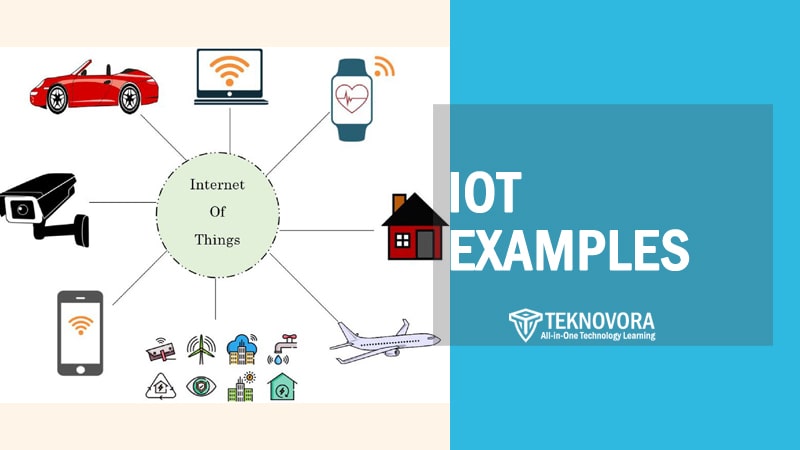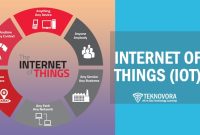The Internet of Things examples you encounter every day might not seem like a big deal—until you realize how much they quietly improve your routines. A coffee machine that starts brewing when your morning alarm rings, a car that alerts you before a part fails, or a streetlight that turns on only when someone walks by—these aren’t futuristic concepts anymore. They’re happening now.
From homes and hospitals to farms and factories, IoT technology is solving real problems in practical ways. It’s helping reduce waste, save energy, and make systems smarter—without you needing to press a single button. And that’s what makes these examples worth exploring.
In this article, we’ll walk through the most useful and relevant examples of the Internet of Things—from smart homes to smart cities—and break down why they matter, how they work, and where they’re heading next.
What Makes an IoT Example?
Not every connected device qualifies as an Internet of Things solution. To truly be considered part of the Internet of Things, a system needs to do more than just connect to the internet—it must sense, collect, and share data in a way that enables smarter decisions or automation.
An IoT example typically includes three key components: a device or sensor, a communication network, and a platform for processing data. These elements work together to perform real-time monitoring, trigger actions automatically, or provide insights to human users. For instance, a smart fridge that tracks food expiration dates and sends reminders to your phone isn’t just “connected”—it’s reacting to data and helping you act on it.
Real-World Internet of Things Examples
Understanding these core elements helps us distinguish real IoT use cases from basic digital tools. In the next sections, we’ll look at how these principles come to life across various industries and environments.
Smart Home: Making Daily Life More Convenient

The Internet of Things examples in smart homes are often the first that come to mind. These are the connected devices most consumers interact with directly—and they’re designed to simplify everyday tasks, save energy, and improve security without constant human input.
Smart Thermostats
One of the most well-known IoT home devices is the smart thermostat. It learns your temperature preferences, adjusts automatically based on occupancy, and can even use weather forecasts to optimize heating or cooling. Devices like Google Nest and Ecobee are popular for reducing energy bills while keeping your home comfortable.
Smart Lighting
IoT-enabled lighting systems can turn lights on or off based on motion, time of day, or voice commands. Brands like Philips Hue allow homeowners to set schedules, change colors, and monitor energy usage—all from a smartphone app.
Smart Security Systems
From doorbell cameras to motion sensors, smart security is one of the fastest-growing sectors in the IoT space. These systems notify homeowners about unusual activity in real time and often integrate with other devices like locks and alarms for automated responses.
Voice Assistants and Hubs
Devices like Amazon Echo and Google Home serve as central hubs for other smart devices, allowing users to control everything with simple voice commands. While they may seem basic, they play a crucial role in orchestrating multiple IoT systems into a seamless experience.
Healthcare IoT Examples: Improving Patient Monitoring and Efficiency
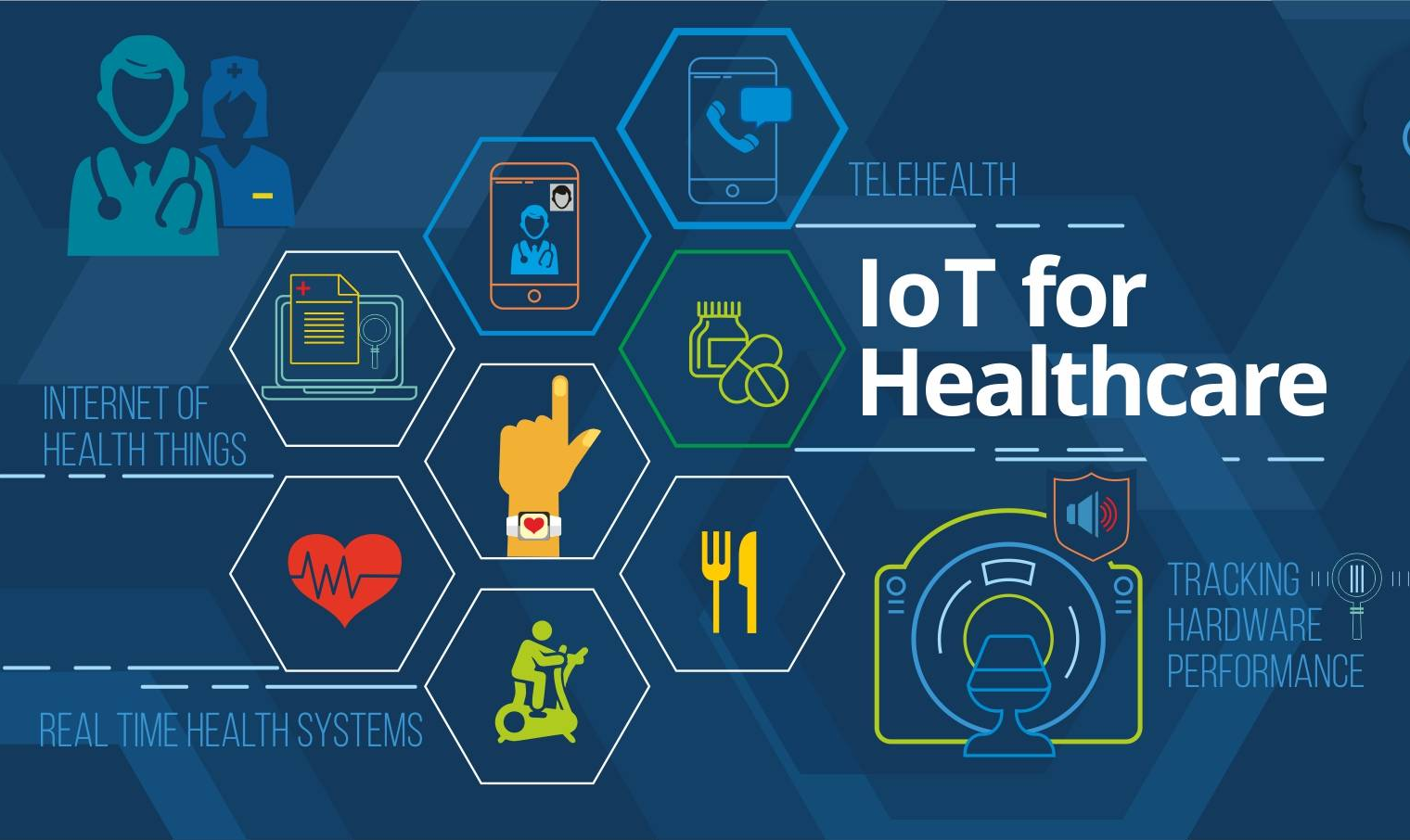
Some of the most impactful Internet of Things examples are happening in healthcare, where real-time data can mean the difference between life and death. IoT technologies are transforming patient monitoring, diagnostics, and even how hospitals manage resources—improving outcomes while reducing operational costs.
Wearable Health Devices
Smartwatches and fitness trackers are among the most visible IoT healthcare tools, constantly collecting data like heart rate, activity level, and sleep quality. Advanced models can detect irregular heart rhythms or sudden drops in blood oxygen, alerting both the user and healthcare providers instantly.
Remote Patient Monitoring
Hospitals and clinics now use IoT-enabled medical devices to monitor patients from their homes. These tools can track blood pressure, glucose levels, or medication usage, sending the data directly to doctors. This reduces unnecessary hospital visits and helps manage chronic conditions more effectively.
Smart Hospital Equipment
IoT is also optimizing hospital operations. Smart beds adjust automatically for patient comfort and safety, while connected IV pumps and medication dispensers ensure accurate dosage. Asset tracking systems help staff locate equipment faster, reducing time wasted on manual searches.
Industrial IoT (IIoT) Examples: Optimizing Operations and Safety

Among the most transformative Internet of Things examples, the Industrial IoT (IIoT) is reshaping how factories, plants, and logistics networks operate. By embedding sensors and smart devices into machinery and infrastructure, industries gain the power to monitor, automate, and improve performance in ways that were never possible before.
Predictive Maintenance
Instead of waiting for a machine to break down, IIoT systems analyze sensor data to detect signs of wear or potential failure. This allows for repairs to be scheduled before issues escalate—reducing downtime, avoiding accidents, and saving on emergency costs.
Real-Time Asset Tracking
Whether managing tools on a factory floor or monitoring containers in transit, IoT-enabled tracking systems provide up-to-the-minute visibility. Companies use RFID, GPS, and smart tags to follow inventory movement, prevent loss, and optimize logistics workflows.
Energy Management in Manufacturing
Factories are notorious for their high energy consumption. With IoT energy monitors, manufacturers can track usage by machine or area, identify inefficiencies, and automate shutdowns during idle times. This not only cuts costs but also supports sustainability efforts.
Worker Safety and Compliance
Smart wearables and environmental sensors are also used to protect workers in hazardous environments. For instance, gas detectors can alert teams to leaks before they become dangerous, and wearables can monitor fatigue or posture to prevent injuries.
Smart Agriculture Examples: Growing More with Less
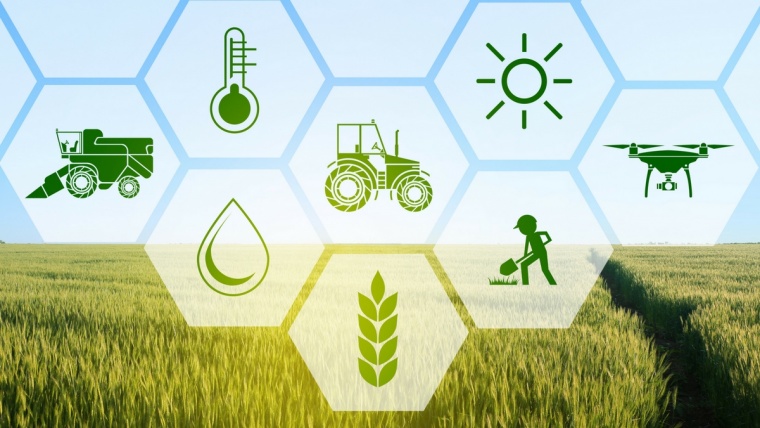
Among the most promising Internet of Things examples, smart agriculture stands out for its ability to increase crop yields, reduce waste, and conserve natural resources. Farmers around the world are turning to IoT solutions to manage operations more precisely—making agriculture both more efficient and more sustainable.
Precision Farming
With IoT-enabled sensors, farmers can monitor soil moisture, nutrient levels, and crop health in real time. These insights allow them to apply water, fertilizer, or pesticides only where and when needed, minimizing waste and improving productivity. Systems like CropX or Arable harness this data to support more informed decisions.
Livestock Monitoring
Wearable sensors for cattle, pigs, and other livestock track movement, heart rate, and feeding patterns. If an animal shows signs of illness or stress, the system can alert the farmer immediately—reducing loss and ensuring animal welfare.
Smart Irrigation Systems
Automated irrigation systems use weather forecasts, soil data, and plant needs to deliver water precisely where it’s needed. These IoT applications help conserve water—critical in drought-prone regions—while maintaining optimal growing conditions.
Agricultural Drones and Robotics
While drones may not be traditional IoT devices, they often work in tandem with connected sensors. They collect high-resolution images for crop health analysis and even apply targeted treatments. Combined with IoT platforms, they provide a full ecosystem of smart agriculture tools.
Smart Cities and Infrastructure Examples: Enhancing Urban Living

Some of the most ambitious Internet of Things examples can be found in the development of smart cities—where entire systems of infrastructure, transport, and services are connected and optimized through real-time data. These applications aim to create safer, more sustainable, and more efficient urban environments.
Smart Traffic and Transportation
Cities are using IoT sensors to monitor traffic flow and adjust signals dynamically, reducing congestion and improving commute times. Smart parking systems help drivers find available spots faster using real-time data, while public transit vehicles are tracked to offer live arrival updates and optimize routing.
Intelligent Street Lighting
Streetlights equipped with motion sensors and ambient light detectors can dim or brighten based on pedestrian or vehicle activity. This reduces energy usage while maintaining safety. Some systems even notify authorities when a light malfunctions, improving maintenance efficiency.
Waste Management Optimization
IoT-connected waste bins report fill levels and help sanitation departments plan efficient collection routes. This prevents overflowing, reduces fuel use for garbage trucks, and supports cleaner public spaces.
Environmental Monitoring
Urban air quality, noise levels, and even water quality are tracked through IoT-based monitoring systems. Real-time alerts can help local governments act quickly to address pollution or safety issues, while also collecting long-term data to shape smarter policies.
Retail and Consumer IoT Examples: Personalized and Automated Experiences

Some of the most recognizable Internet of Things examples exist in the retail and consumer world, where smart devices are transforming how people shop, interact, and experience brands. From personalized advertising to cashierless checkout, IoT in retail is about creating seamless, data-driven experiences.
Smart Shelves and Inventory Management
Retailers use IoT-enabled shelves that detect product levels in real-time, helping prevent stockouts or overstocking. These shelves can also track which items are picked up most often, offering insights into consumer behavior and product placement effectiveness.
Automated Checkout Systems
Stores like Amazon Go rely on a network of sensors, cameras, and IoT devices to enable shoppers to simply grab items and leave—charging their accounts automatically without the need for a cashier. This innovation reduces wait times and simplifies the shopping process.
Personalized Marketing
With the help of IoT beacons, retailers can detect a shopper’s location within the store and send targeted offers or product suggestions directly to their smartphones. This location-based marketing not only boosts engagement but also increases conversion rates.
Smart Vending Machines
Modern vending machines equipped with sensors and connectivity monitor inventory, payment systems, and usage trends. They can suggest popular products, detect maintenance issues early, and even adjust prices based on demand and time of day.
Healthcare IoT Examples: Remote Monitoring and Smart Diagnostics

The healthcare industry is one of the most impactful arenas for Internet of Things examples, especially when it comes to improving patient outcomes, reducing hospital visits, and enabling proactive care. IoT devices in healthcare are changing how conditions are diagnosed, monitored, and treated—often from a distance.
Wearable Health Devices
Smartwatches and fitness trackers are the most common IoT healthcare devices. These wearables continuously collect data such as heart rate, oxygen levels, sleep patterns, and physical activity. Doctors and patients alike can use this data to detect irregularities early and make informed decisions about treatment or lifestyle changes.
Remote Patient Monitoring (RPM)
For chronic conditions like diabetes, asthma, or heart disease, IoT-enabled RPM systems allow patients to be monitored from home. Devices send real-time health metrics to healthcare providers, who can intervene when necessary—reducing emergency visits and hospital stays.
Smart Hospital Equipment
Infusion pumps, imaging machines, and other medical devices are being connected to hospital networks to streamline operations. They can alert technicians when maintenance is due or report errors before they cause harm. Some equipment even auto-calibrates based on the patient’s specific needs.
IoT in Elderly Care
IoT sensors placed in elderly patients’ homes can detect falls, monitor movement patterns, and ensure medication adherence. Families and caregivers receive instant alerts, helping seniors live independently while staying safe.
Industrial IoT (IIoT) Examples: Automation and Efficiency in Manufacturing
In the industrial sector, the Internet of Things examples are often referred to as Industrial IoT (IIoT). These implementations focus on enhancing operational efficiency, reducing downtime, and enabling predictive maintenance across factories, plants, and production lines.
Predictive Maintenance
One of the most valuable IIoT use cases is predictive maintenance. Sensors embedded in machinery monitor variables like vibration, temperature, and energy consumption. If patterns indicate potential failure, the system notifies technicians before breakdowns occur—saving both time and cost.
Smart Manufacturing Systems
Factories are becoming “smart” by integrating IoT-enabled robots, conveyors, and production tools that communicate with each other. These systems adjust operations in real time based on supply chain input, product demand, or resource availability, increasing both agility and output quality.
Asset Tracking and Optimization
Using IoT-based asset tracking, manufacturers monitor the location, condition, and usage of tools, vehicles, and components. This leads to better inventory control, reduced equipment loss, and optimized logistics both within and outside the factory.
Worker Safety and Environment Monitoring
IIoT systems can monitor environmental conditions like gas leaks, temperature spikes, or air quality in hazardous workspaces. Wearable devices also ensure that employees are safe by tracking exposure levels, fatigue, and movement in restricted zones.
Agriculture and Environment IoT Examples: Smart Farming and Sustainability
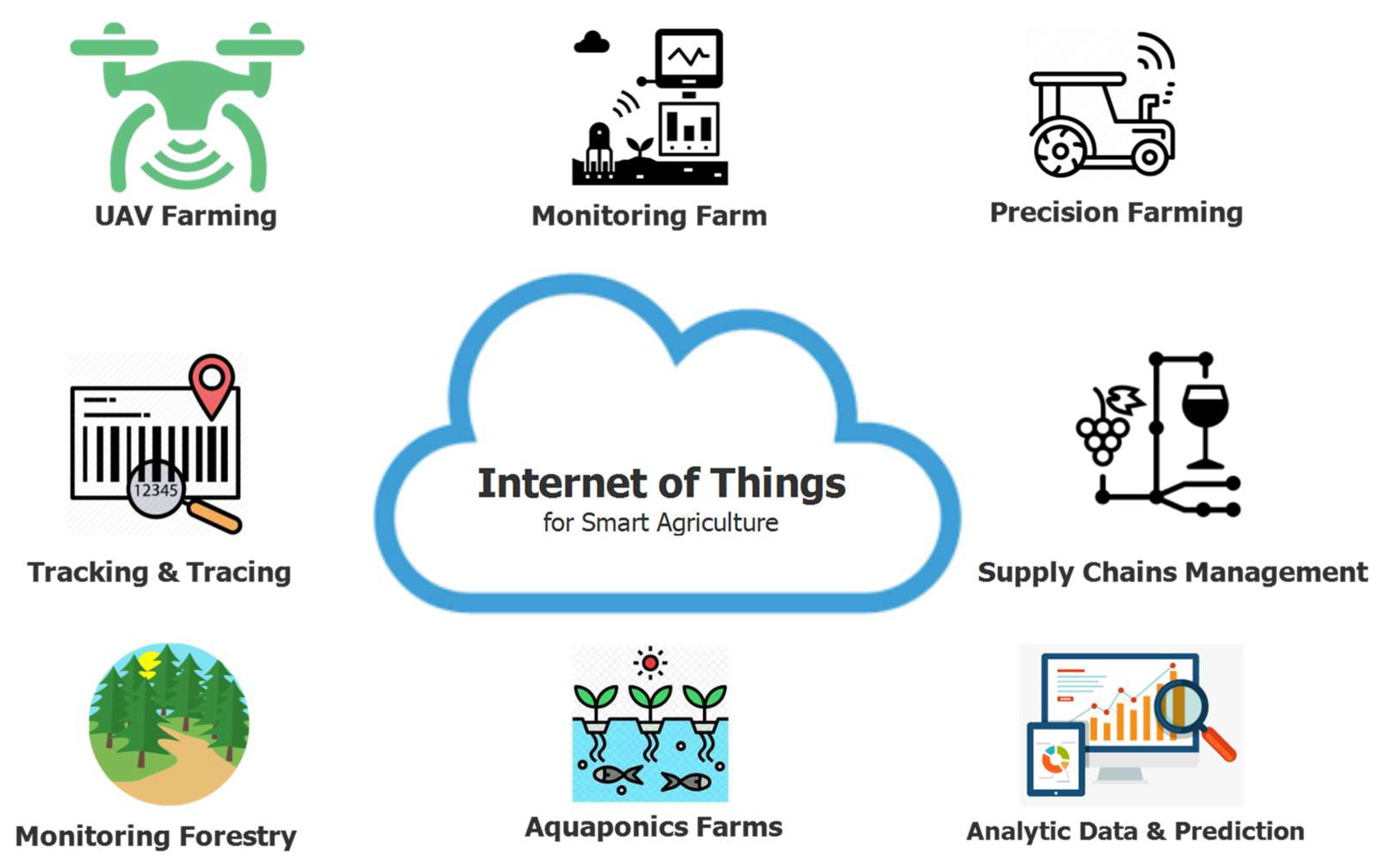
The Internet of Things examples in agriculture and environmental monitoring showcase how data and connectivity can support sustainable development. Farmers, researchers, and governments use IoT to optimize resource use, monitor ecosystems, and respond to climate challenges in real time.
Precision Agriculture
IoT-enabled tools such as soil moisture sensors, smart irrigation systems, and GPS-guided tractors allow farmers to deliver the right amount of water, fertilizer, or pesticide at the right time. This precision agriculture approach reduces waste, increases yield, and conserves natural resources.
Livestock Monitoring
Wearable IoT devices for animals track health indicators like heart rate, body temperature, and movement. Farmers can quickly detect illness, stress, or abnormal behavior—ensuring healthier livestock and reducing mortality rates.
Climate and Environmental Monitoring
Governments and researchers deploy IoT sensors to monitor air and water quality, detect wildfires, and track deforestation or pollution levels. These devices provide real-time environmental data, enabling faster response to natural disasters or long-term environmental planning.
Automated Farming Machinery
IoT-connected harvesters, drones, and planting robots are becoming increasingly common on large farms. These machines operate with high precision and efficiency, often requiring minimal human intervention.
Transportation and Automotive IoT Examples: Smarter, Safer Mobility

The Internet of Things examples in transportation and automotive industries illustrate how connectivity is reshaping mobility. From real-time traffic management to autonomous vehicles, IoT is helping to create smarter, safer, and more efficient transportation systems.
Connected Vehicles
Modern cars are equipped with sensors and connectivity features that monitor performance, detect faults, and even update software over the air. These connected vehicles can communicate with each other (V2V) and with infrastructure (V2I), reducing accidents and optimizing traffic flow.
Fleet Management and Telematics
For logistics companies, IoT-powered telematics systems track vehicle location, fuel usage, driver behavior, and maintenance needs. This allows for better route planning, reduced operational costs, and improved delivery times.
Smart Traffic Systems
Cities are using IoT sensors to control traffic lights based on congestion levels, detect violations, and manage parking availability in real time. These systems ease traffic bottlenecks and reduce emissions from idling vehicles.
Predictive Maintenance for Public Transit
Buses, subways, and trains outfitted with IoT systems can report wear and tear before failure occurs. This predictive maintenance helps prevent breakdowns, reduce downtime, and ensure rider safety.
Retail and Logistics IoT Examples: Enhancing Customer Experience and Efficiency

In both retail and logistics, some of the most practical Internet of Things examples are solving problems that affect inventory, delivery times, and customer satisfaction. These sectors use IoT to streamline operations, reduce losses, and create more responsive systems.
Smart Inventory Management
IoT sensors on shelves and storage areas allow businesses to monitor inventory levels in real time. When stock runs low, automated systems trigger restocking alerts or even place orders automatically. This reduces overstocking and prevents stockouts—improving operational efficiency and customer satisfaction.
Real-Time Shipment Tracking
In logistics, GPS and IoT-enabled devices monitor the exact location, temperature, humidity, and vibration of shipments. This is especially critical for sensitive goods like pharmaceuticals or perishable food. Customers and managers get live updates, improving trust and transparency.
Cold Chain Monitoring
IoT plays a vital role in ensuring product quality during transportation. Cold chain systems use smart thermometers and humidity trackers to ensure goods remain within safe ranges. If a container deviates from set conditions, the system sends immediate alerts to logistics teams.
Smart Checkout and Shopping Experience
Retailers enhance the in-store experience using IoT-based smart carts, self-checkout systems, and beacon-triggered promotions. These tools reduce wait times, personalize offers, and make shopping smoother—combining convenience with engagement.
Emerging IoT Trends: AI Integration, Edge Computing, and 5G
The Internet of Things examples continue to evolve alongside breakthroughs in artificial intelligence, data processing, and network technology. These advancements are not only expanding what IoT can do, but also improving how fast, smart, and secure these systems operate.
AI-Powered IoT
Artificial intelligence is increasingly being embedded into IoT ecosystems. Machine learning algorithms help devices interpret complex data, make autonomous decisions, and improve over time. For example, AI-enabled surveillance cameras can detect suspicious behavior in real time, while smart thermostats learn user habits to optimize energy use.
Edge Computing
To reduce latency and bandwidth use, edge computing processes data closer to where it’s generated—on or near the IoT device itself. This is critical for time-sensitive applications like autonomous vehicles, industrial robots, or healthcare monitors, where delays can be dangerous or costly.
5G Connectivity
The rollout of 5G networks is a game-changer for IoT. With dramatically faster speeds and lower latency, 5G allows more devices to connect simultaneously and exchange data instantly. This opens new possibilities for smart cities, remote surgery, augmented reality, and more.
Blockchain for IoT Security
With billions of devices connected, data security is a growing concern. Blockchain technology is emerging as a secure, decentralized way to manage device identities and data integrity. This approach helps reduce fraud, tampering, and cyberattacks across IoT networks.
Conclusion: How IoT is Reshaping the World Across Industries
The Internet of Things examples across industries—from smart homes and wearable tech to agriculture, healthcare, transportation, and beyond—demonstrate how deeply IoT is woven into our everyday lives. These connected systems are not only improving efficiency and safety, but also transforming how we interact with the physical world.
As IoT continues to merge with artificial intelligence, 5G, and edge computing, the potential applications will become even more intelligent, responsive, and personalized. Whether you’re monitoring your fitness, automating your supply chain, or optimizing an urban environment, IoT is making data-driven innovation possible at every scale.
For businesses, governments, and individuals alike, embracing IoT is no longer optional—it’s essential for staying competitive and future-ready in a connected world.
Frequently Asked Questions (FAQ)
What is an example of the Internet of Things in daily life?
A common Internet of Things example is a smart thermostat like Nest, which learns your habits and adjusts your home’s temperature automatically to save energy.
How is IoT used in smart cities?
IoT is used in smart cities for traffic management, smart lighting, waste collection, and environmental monitoring, all aimed at improving urban efficiency and sustainability.
What industries benefit most from IoT?
Industries like healthcare, manufacturing, logistics, agriculture, and retail gain major benefits from IoT through automation, real-time monitoring, and data-driven decision-making.
How does IoT work with artificial intelligence?
IoT devices collect vast amounts of data that AI can analyze to detect patterns, predict outcomes, and trigger automated responses, making systems smarter and more efficient.
Is IoT secure, and what are the risks?
While IoT offers great advantages, it also introduces cybersecurity risks like data breaches and unauthorized access. Solutions include strong encryption, authentication, and emerging technologies like blockchain.

